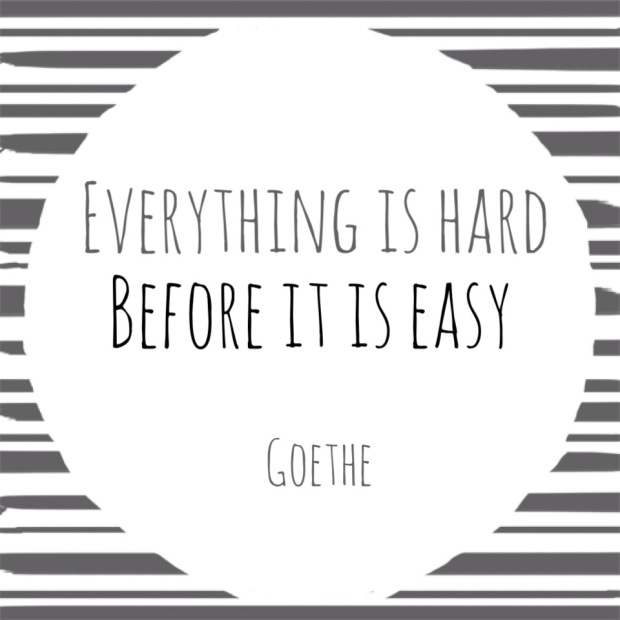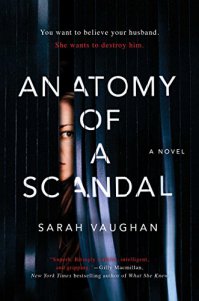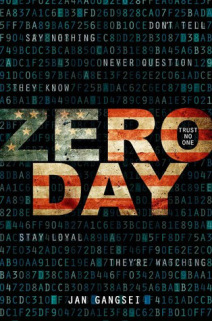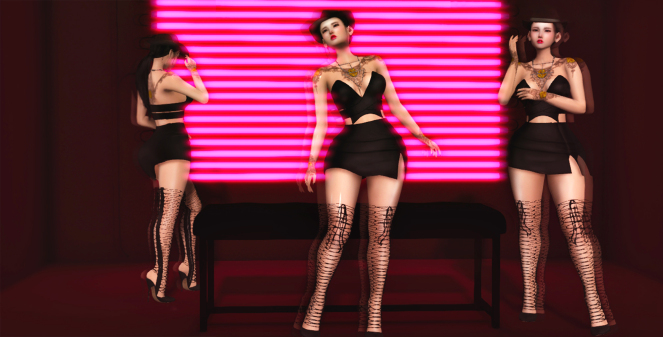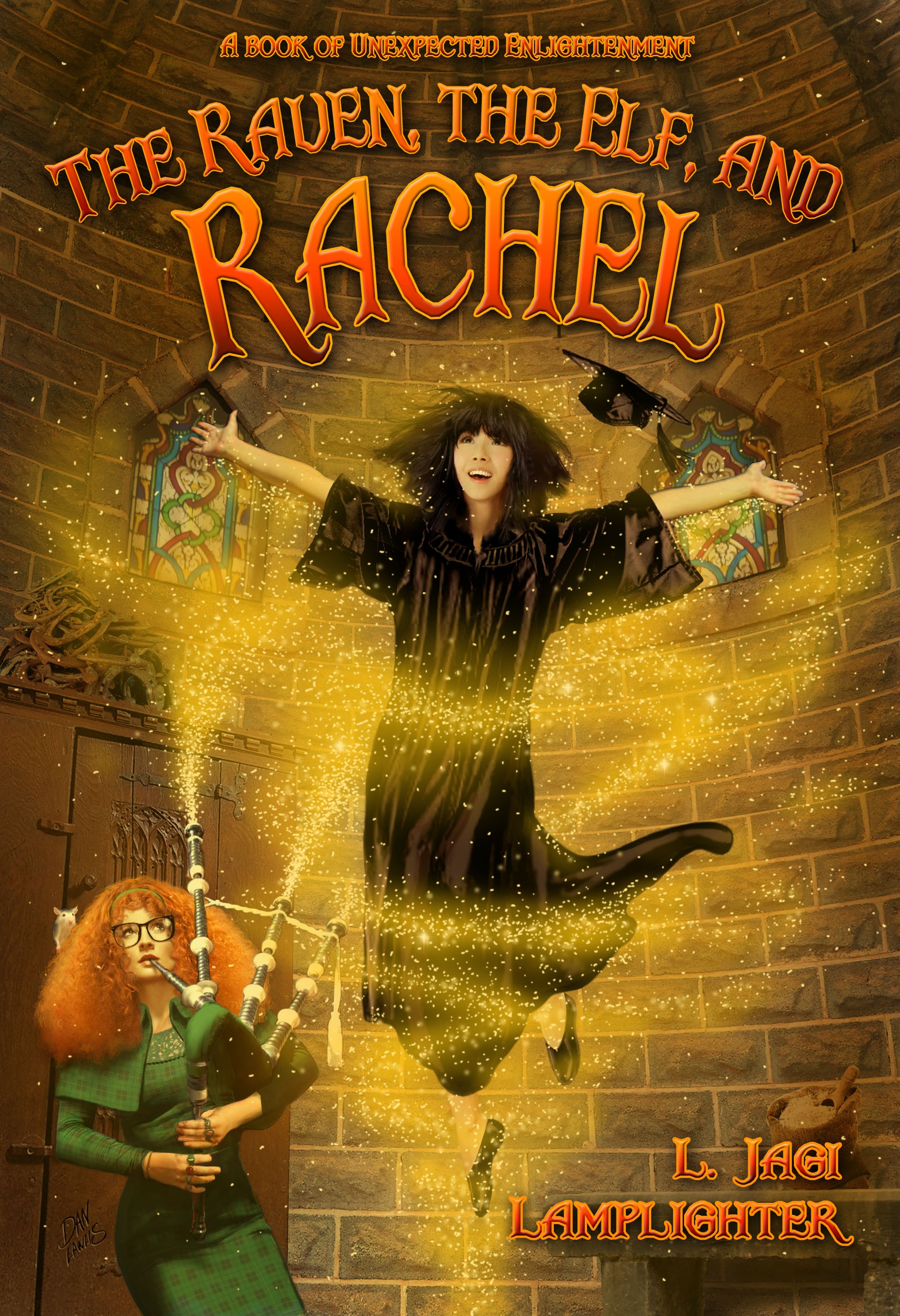 The Unexpected Enlightenment of Rachel Griffin had a magical girl, who ended up at a magical school, collected nearly a dozen magical friends, joined a fraternity, investigated a mystery, saw an omen that heralds the doom of worlds, headed off an attack by an army of dozens of mind-controlled students, saved the entire campus, and provided support for a battle that involved the dragon that used to be Professor Moriarty.Not bad for the first week, huh?
The Unexpected Enlightenment of Rachel Griffin had a magical girl, who ended up at a magical school, collected nearly a dozen magical friends, joined a fraternity, investigated a mystery, saw an omen that heralds the doom of worlds, headed off an attack by an army of dozens of mind-controlled students, saved the entire campus, and provided support for a battle that involved the dragon that used to be Professor Moriarty.Not bad for the first week, huh?
No. Sorry, my mistake. It’s not bad for the first five days of school. Take that, Harry Potter.
How do I know that book one was the first week? Because book two of L. Jagi Lamplighter’s Rachel series opens only a few hours after the end of book 1, and explicitly states she’s only been there five days.
If the books get any more dense, we’re going to have to call Rachel Griffin “Jack Bauer.”
In spy novels, most people will cite John Le Carre, usually for good reason. As far as I’m concerned, his crowning achievement were his George Smiley novels. The middle book of his Carla trilogy was called The Honorable Schoolboy— book 1, Tinker Tailor Soldier Spy, ended with the discovery of a mole in MI6, and his unmasking. Much of the second book is walking back the cat — going through the mole’s history and discovering exactly what havoc he hath wrought upon the spy service during his period working for the other team. Much of The Raven, the Elf, and Rachel proceeds forward in a similar manner. Book one was so dense, and the implications from them so vast, we essentially need an after action report just to get a good idea of the fallout.
In fact, the first 100 pages of The Raven, the Elf, and Rachel handles: recapping the first book, reintroducing the characters, walks back the cat on the enemies from book 1, as well as sets up the conflict going forward. Not bad, huh?
So, if you think that the first book ended a little abruptly, without any follow through, there’s a good reason for that. It would have added another 50-100 pages.
But don’t worry, there is enough solid data here that you can read these books back to back without it being a problem. How do I know that? Because I have three other people I convinced to read these books who did just that.
Anyway, for those of you who fear the repetitive nature of YA books … no. Not at all. There is nothing repeated here. In fact, this one continues to wrap up plot threads left over from the first book — there actually were plot threads dangling, but I didn’t realize it with all the screaming, chaos, and running about in the grand shootout in the finale. I’m almost afraid to see how the series will end… answer: in fire.
And good God, the references. Everywhere. I think you need a degree in classical literature and be in on the jokes of three different languages and five different cultures in order to get all of the little hints and nods in the novels. But that’s a general observation, not specific to this book.
In The Raven, the Elf, and Rachel, you see more sides to people we’ve already seen. Whether it’s the magical prince of Australia, or the Artful Dodger and his pet dragon, or even Vladimir von Dread (I’m almost certain that his family crest reads DREAD IS BAVARIA. BAVARIA IS DREAD, but I haven’t asked yet). In fact, if she ever wants to do an anthology, I call dibs on von Dread shorts, he’s just that interesting. It is a vast and colorful crew, and I suspect we’re going to see more of their own backstories as time goes on.
Now, I’ve seen that Jagi doesn’t like having her book compared to Harry Potter. I know. It’s not fair to JK Rowling. But I’ve given book 1 to other people. And they read only 10% into Unexpected Enlightenment and decided that it was a deeper and richer world than Potter. And the farther in we go, the deeper everything is. Or maybe it just shows us how shallow Potter was and we never realized it. There are no johnny one-note characters here. Everyone has different emotions and moods and personalities. Hell, I think Rachel went through more emotions over the course of any five pages of The Raven, the Elf, and Rachel than the entire body of Hogwarts in 7 novels.
I’m told that it’s unfair to compare the weak parts of Rowling to the best parts of Rachel Griffin. Except that there are no weak parts to the Rachel Griffin novels. The world is deeper and far more cosmopolitan. The characters are more complex. The plot is faster and more tightly written. The bad guys are more threatening. The overarching mystery is more compelling.
And anyone who felt that Harry Potter presented a genuine threat to Christianity, I have only one thing to say to you: Keep your eye on the Lion.
As for the plot… the short version is that it’s really wrapping up a lot of plot threads from book 1. And there’s a lot to wrap up: the raven that heralds the doom of worlds; the Outsiders from other worlds; the “Lightbringer,” the ones behind Moriarty last time; the one behind THAT threat; her relationship status; the story behind Rachel’s father and his work as an agent … there’s an awful lot kicking around. And we aren’t even going to get into all of the new various and sundry plot elements kicking around.
SHORT VERSION: five out of five. Go read it.
The Dragon Awards are open and ready for nominations, and I have a list of suggestions you might want to take a look at. If you already have a good idea of what you want, just click here to go and vote for them. The instructions are right there.Or: sign up for my mailing list in order to get free stuff. The Love at First Bite series.
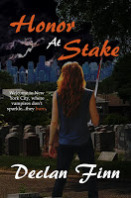

 Share this:
Share this:
